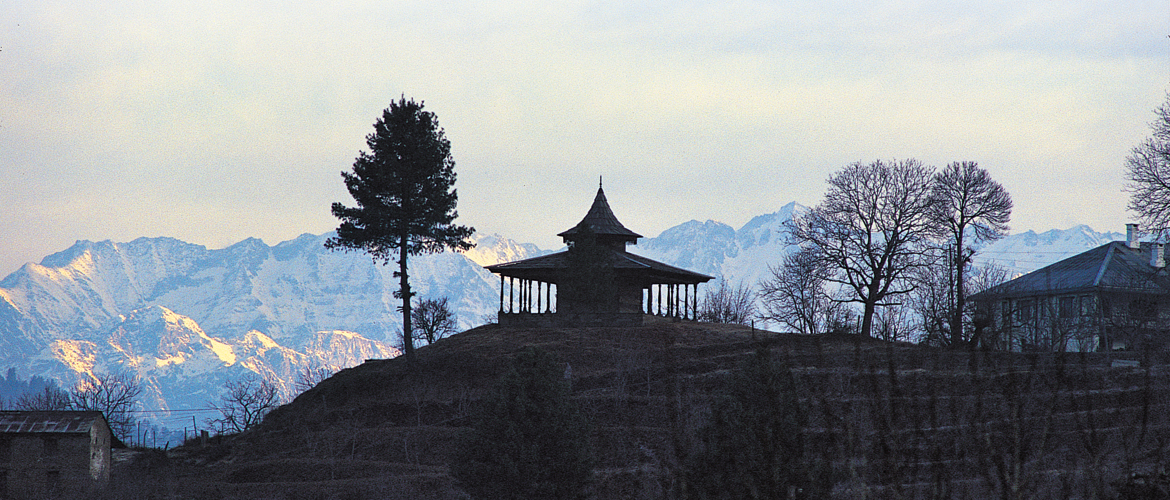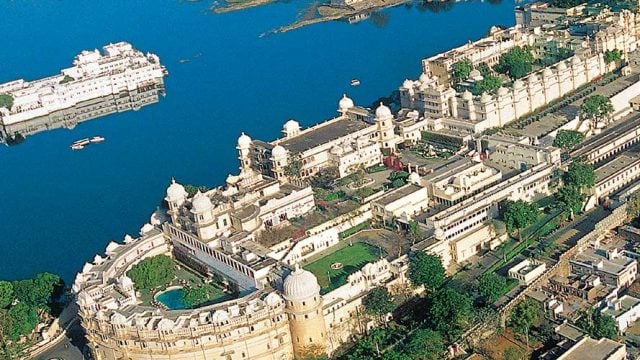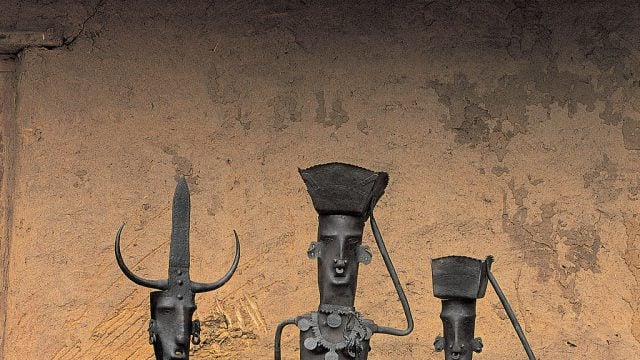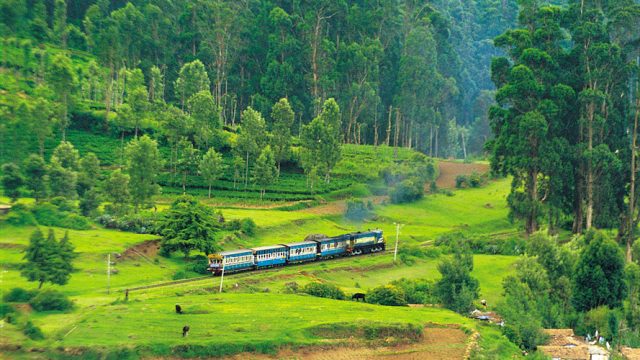It’s been a peculiar inability of man to live without apples. And after Eden, the fruit must
Samuel Evans Stokes of Philadelphia arrived in India in 1904 on a spiritual quest and stayed on to make it the centre of his experiments with life. His is a fascinating story of an erstwhile missionary who, in order to attain social integration with his adopted community, started living the life of a farmer, gave up his Western clothes, married a local girl, changed his religion to Hinduism and his name to Satyanand Stokes. As he worked with the destitute around Thanedar in the 1920s and ’30s, fought begar and joined the freedom movement, he also came to believe that the answer to the poverty of the region lay in the British love for apples. And thus, out of all his dreams— “Yet the dreams were something… They were not ignoble dreams, no matter how imperfectly they found fulfilment” — the one that bore the richest fruit was the one that made Thanedar the fountainhead of the famous Kotgarh apples.
Stokes did not introduce apples to India, as is mistakenly believed. But he did, with method and patience, turn apple-farming on its head. It’s an unusual tale of An American in Khadi —as Stokes is described in the title of his biography — of a missionary who converted himself, and for good measure turned Himachal Pradesh into India’s ‘Apple State’. And this is a tale best enjoyed with an elegant length of wine, made from the local apples, in the sleepy warmth of the tepid Thanedar sun.
Things to See & Do
Thanedar, at 7,300 ft, is still a small, one-street place with a few shops and government buildings surrounded by orchards. If you go in April, the apple blossom would have whitewashed the deep valley of the Sutlej in its spring bloom. A visit in the summer months would provide you a company of people who want to escape both the heat of the plains and the crowds of hill stations. Rains are the time for people stopping en route to the valleys of Sangla and Spiti, for apple harvest and pressures on the administration to keep the roads clear. Puja and Christmas again bring holiday hordes. January is the month of snow and a little uncertainty about the road situation. In any season, a weekend sojourn to Thanedar would only whet your appetite to be here, to be in the hills and to tread them with slowness and longing.

BAROBAG HILL
Barobag, so named because of the unusually large size of one of its fields (at least by hill standards), is the highest point in Thanedar. Flanked by the Shilajan Peak, it offers stunning views of the snow-capped mountains to the north. Many miles below, you can see the meandering Sutlej make its way to the Punjab plains.
Atop the hill is Harmony Hall, the stately house Stokes built in 1912. A three-storeyed structure made of stone, wood and slate, it was here that Samuel Stokes’ delicious experiments with apples began.
The foundation of Stokes’ orchards was laid with a few saplings of apple, pear and plum trees in 1916. Some five years later, he received a Christmas gift of Golden Delicious apple saplings from his mother. However, when the saplings reached Kotgarh, Stokes was spending time in Lahore Jail. A prominent member of the Indian National Congress by then, he was arrested by the British government for ‘sedition’. But Agnes, his wife, carefully planted and nurtured the Golden Delicious saplings close to their house.
By 1928, the crunchy fruit from these trees, packaged in green printed paper with the trademark H.H. (Harmony Hall), had taken Shimla by storm. The rest, as they say, is history. After a decade’s effort, Himachal officially became the Apple State of India.
Today, a few apple trees still grow around Harmony House. And though Stokes’ descendants have mostly migrated to the US, on a reverse material journey perhaps, the house is still used occasionally. It’s a private residence, so while you may look at it, entry is not allowed.
Now burdened with two telecom towers, the Paramjyoti Mandir also marks Barobag Hill. Built in 1937, this rather unique grey-stone and Burma teak temple was also conceived by Stokes. There is no idol in the temple and it is dedicated to the deva “who is beyond all names, words and forms”. The wood-panelled walls have wooden Sanskrit shlokas impressed upon them.
In order to reach Barobag, take the narrow, steep path going off the road opposite the playground just before Thanedar’s market.
KOTGARH
In the early 19th century, Kotgarh provided one of the playing fields for the war games between the states of Nepal, Kangra, Kullu, Punjab and the then-ascendant British East India Company. After a lot of flux, a steady state was achieved in 1843, when the East India Company took over Kotgarh after pushing back the invading Gurkhas.
In 1843, a mission centre and the Gorton Mission School were set up. Then, in 1872, St Mary’s Church was built next the school. It still stands, looking like a large wooden toy, and holds a Sunday morning service. The mission owned vast properties and ran an orchard, but did not have much success with conversions and hence described the area as ‘unfruitful’, hardly aware of the irony. Contact the principal for a tour of the school, preferably after 4 pm. Kotgarh is a pleasant 5-km walk from Thanedar.
HATU PEAK
This is the highest peak in the vicinity at 11,155 ft and is home to the local mother-goddess Hattu Devi. There is a distinct shaded path with little undergrowth going up through the pine forest, which affords a steady climb. It is rare to find a place of such intense solitude with so little effort. The top is just above the tree line, here marked by black oak trees, and offers views on three sides. The land falls away dramatically, carrying forests, villages and towns on its slopes with equal aplomb. The twin temples of Hattu Devi, with idols of black stone within, stand side by side as if in a before-and-after advertisement — one shrine has been recently refurbished in white tiles.
TANI JUBBAR LAKE

Around 8 km away, this must be the tiniest body of water ever called a lake. Yet the moss-covered lake floor, the grass around and the pine-crested promontory nearby make you realise, for once, how little it takes to transport you away from the world. Also visit the shrine to Nag Devta on the shore. Take the diversion to the left 61/2 km from Thanedhar on the road towards Narkanda. The lake is 11/2 km from there.
SHOPPING
Obviously, apples are the things to buy here. During harvest time, it’s possible to sling a wicker basket along and pick your own fruit straight from the orchard. At the Banjara Retreat, 1 km short of Thanedar’s bazaar on the way in from Narkanda, you can get jams and chutneys made without artificial preservatives. And all along the highway on the way to Thanedar, you will see HPMC outlets selling local wines —apple, peach, plum, rhododendron. These range between ₹85-350 a bottle.
Where to Stay & Eat
Banjara Orchard Retreat (Tel: 01782-222265, 09418077180; Tariff: ₹4,500-6,350, with meals) is set in the inevitable apple orchard, overlooking the deep valley of the Sutlej and offering delicious sunsets. The eight rooms and suites are comfortable, the sitting and dining spaces homely; the menu is flexible and comforting; their apples, in both the jam and chutney forms, are mouth-watering. And Prakash Thakur, the owner, takes good care of his guests, telling them well-collected tales of these hills and guiding them on the mountain paths.
The Wilderness Resort (Mob: 09816060933; Tariff: ₹6,000) is on a hilltop next to Tani Jubbar Lake. There’s a dining hall, a common TV and heaters. The resort has 6 charming suites with nice hill views. It’s also an excellent base for exploring the surrounds of Thanedar.
The PWD Rest House (Tel: 240075; Tariff: ₹300) is right on the solitary road running through Thanedar. It has two clean, comfortable rooms and a lawn outside, where ‘tourists are welcome’. Meals will be cooked for you.
Thanedar is at an age where eating out, for the local population, is neither necessary nor indulged in. The market has a tea shop and a booze shop as the eating (well, drinking, really) options.
apple orchards
Banjara Orchard Retreat
Barobag Hill





